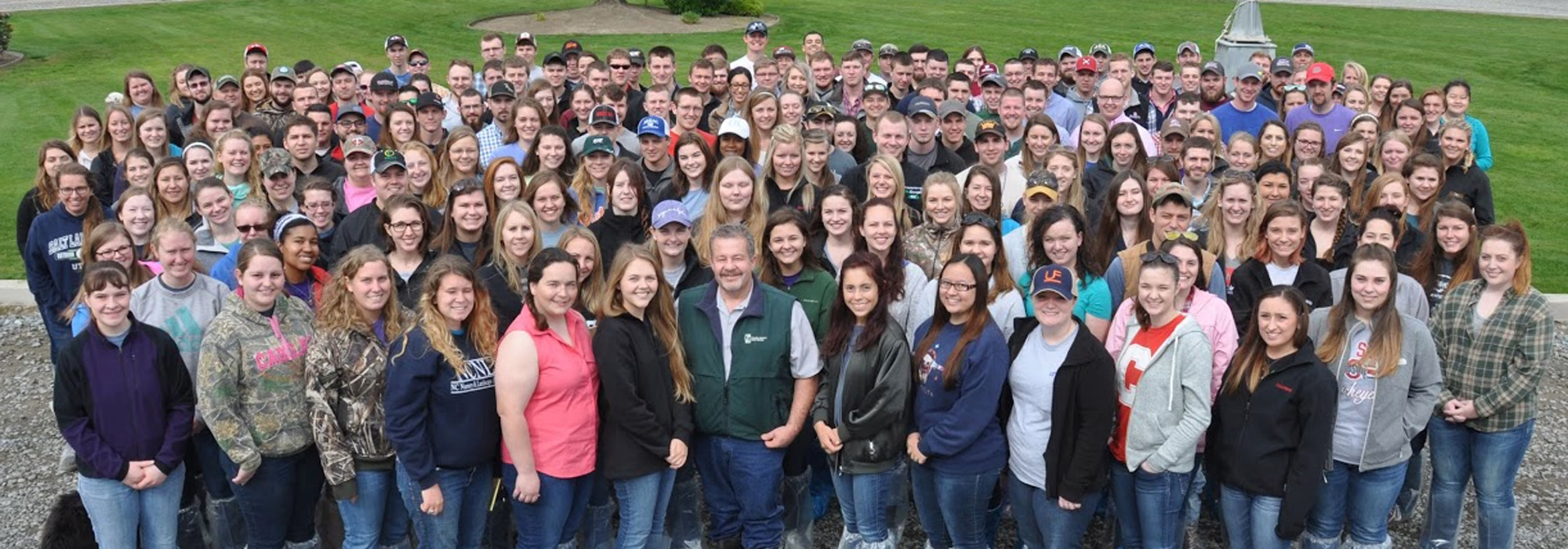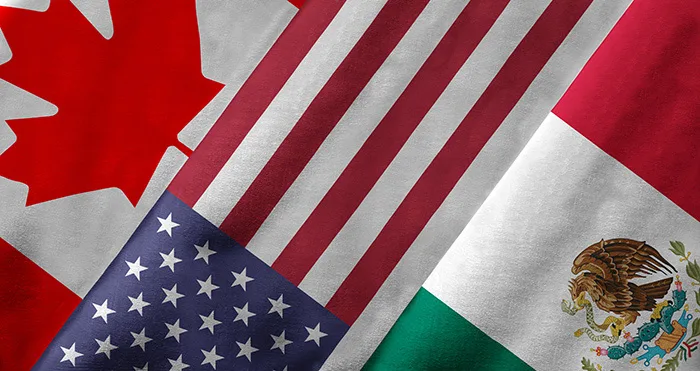Protectionism is on the rise. Is your farm ready for the shake-up in global dairy trade? Here’s what you need to know now.
Summary: Feeling uneasy about the future of dairy trade? Rising protectionism is the latest curveball thrown into an already complex global market. Recent moves by China and Colombia to investigate subsidies in Europe and the U.S. could have far-reaching consequences on the dairy industry. Are you prepared for how these developments could impact your farm’s bottom line? “As a dairy farmer, understanding the implications of these trade investigations is crucial for navigating the upcoming challenges.” The global dairy trade is a complex industry with major players from Central Europe, North America, Oceania, and Asia. Exporters like New Zealand, the European Union, and the United States dominate the market, while importers like China, Mexico, and Southeast Asian nations rely on imports. International trade agreements like the US-Colombia Trade Promotion Agreement (TPA) help reduce tariffs and set trade norms, but they are often criticized for potentially favoring one side. China’s Ministry of Commerce is investigating European agriculture subsidies, which could impact the global dairy sector. The European Union’s participation could result in excess output in Europe, potentially pushing down global prices and harming farmers worldwide. A growing trend of protectionism is affecting global trade relations, with Colombia’s dairy farmers alleging that these subsidies enable artificially cheap U.S. milk powder, undermining domestic dairy pricing and putting pressure on the sector. Dairy farmers need to diversify markets, form cooperatives, advocate for fair trade policies, stay informed, leverage technology, build strong relationships with local suppliers and customers, and consider value-added dairy products.
- Rising protectionism poses a new challenge to the global dairy trade.
- China and Colombia are investigating U.S. and European dairy subsidies.
- These investigations could impact global dairy prices and affect your farm’s profitability.
- Understanding trade agreements and their criticisms is crucial for staying informed.
- Diversifying markets and forming cooperatives can help mitigate risks.
- Staying updated on global trade developments is essential.
- Leveraging technology and forming strong local relationships can offer stability.
- Consider producing value-added dairy products to enhance your market position.

Are you ready to take charge in the face of increased protectionism in the global dairy trade? As dairy producers, you have the power to navigate the changing landscape as governments scrutinize international subsidies. The recent probes by China and Colombia may alter long-standing trade agreements and market dynamics, but with the right strategies, you can steer your business through these challenges.
Take the European Union as an example. The EU, a significant player in the global dairy market, has been a major exporter of dairy products. However, the EU’s decision to impose tariffs on Chinese electric automobiles has sparked a retaliatory investigation by China’s Ministry of Commerce into Europe’s agricultural subsidies. This action, initiated at the request of Chinese dairy farmers, could have significant repercussions for European dairy exports.
On the opposite side of the world, Colombia’s government is scrutinizing U.S. funding. Colombian dairy farmers blame programs such as the Dairy Margin Coverage and the USDA’s Dairy Donation Program for the low cost of milk powder from the United States. With so much money flooding into the dairy business in the United States, Colombian farmers are concerned about their livelihoods.
The Global Dairy Showdown: How Major Players and Trade Agreements Shape the Market
The global dairy trade is a thriving business with participants from Central Europe, North America, Oceania, and Asia. Significant exporters, such as New Zealand, the European Union, and the United States, dominate the market, selling dairy products such as milk, cheese, and milk powder to nations across the globe. Fonterra Cooperative Group, based in New Zealand, is one of the world’s major dairy exporters, significantly impacting market trends.
Key importers include China, Mexico, and Southeast Asian nations, who depend on imports to fulfill rising demand. China, in particular, has experienced increased dairy imports to meet local demands due to growing consumer demand and limited domestic production capacity. Geographic indications (G.I.s) in the E.U. and cheese imports from the United States considerably impact commerce.
The US-Colombia Trade Promotion Agreement (TPA) is a crucial international trade accord. This agreement, which came into force in 2012, has significantly influenced the global dairy trade. It has led to a considerable increase in U.S. milk powder shipments to Colombia, affecting the Colombian dairy market. Such agreements, while aiming to balance advantages between exporting and importing countries, are often criticized for potentially favoring one side.
These agreements affect trade flows and domestic industry. For example, the TPA has permitted the continual supply of U.S. dairy into Colombia, which some argue undercuts local farmers. This conflict demonstrates the delicate balance necessary to preserve fairness and competitiveness in the global dairy market, emphasizing the importance of continuing reviews and discussions.
China’s Investigation into European Subsidies: A Game-Changer for Global Dairy Trade?
China’s Ministry of Commerce has begun extensively examining European agriculture subsidies. This initiative, spearheaded by Chinese dairy producers, seeks to determine if these subsidies provide European farmers an unfair competitive advantage. Experts fear that the inquiry might substantially impact the global dairy sector.
Beijing’s investigation followed the European Union’s decision to slap tariffs on most electric cars imported from China, intensifying trade tensions between the two industrial powerhouses. European dairy farmers have concerns about their market share in China and global commerce.
Stanford University economist Roger Noll states, “Trade barriers can disrupt established supply chains, leading to inefficiencies and reduced market access for many producers.” The European dairy sector, which already accounts for a sizable share of global dairy exports, may experience a fall in global competitiveness if China imposes more taxes or restrictions based on the investigation’s findings.
Data demonstrate that the European Union is a significant participant in the global dairy industry, with exports continuously increasing over the last decade [source]. Any interruptions caused by China’s discoveries might result in excess output in Europe, possibly pushing down global prices and harming farmers throughout the globe.
This inquiry into U.S. and European subsidies is part of a broader trend of growing protectionism, which has the potential to significantly alter global trade relations. The conclusions of these investigations could have long-term implications for market conditions and trade ties. They could lead to new trade obstacles or more egalitarian practices, reshaping the global dairy trade in the process.
How U.S. Subsidies Might Be Shaking Up The Global Dairy Market? Colombia Certainly Has Some Thoughts…
How are U.S. subsidies affecting the global dairy market? Colombia undoubtedly has some ideas. They are looking at U.S. dairy subsidies, focusing on two essential programs: the Dairy Margin Coverage (DMC) program and the USDA’s Dairy Donation Program.
So, what is the crux of their complaints? Let’s dig in. The DMC program provides a significant safety net for U.S. dairy producers, with $1.65 billion issued in 2023 to cover the difference between milk prices and feed costs. Furthermore, the USDA’s Dairy Donation Program helps farmers buy excess milk products to distribute to food banks. Sounds useful.
Not if you are a Colombian dairy farmer. Colombia’s dairy farmers allege that these subsidies enable U.S. milk powder to be offered artificially cheaply, undermining domestic dairy pricing. They believe this makes it difficult for local farmers to compete, putting pressure on the sector.
Imagine being a Colombian dairy farmer trying to earn a livelihood, only to have your market inundated by cheaper U.S. milk powder. Tariffs and trade adjustments resulting from the United States-Colombia Trade Promotion Agreement (TPA) are not helping since they have opened the door for increased U.S. dairy imports.
The Colombian government is delving deeply into the subsidy concerns, and the stakes are high. How will this probe impact the delicate balance of the global dairy trade? Will it result in new trade obstacles or more egalitarian practices? Only time will tell.
Impact on U.S. Dairy Exports: A Case Study with Colombia
So, how can these investigations and possible trade restrictions affect the U.S. dairy sector, particularly shipments to Colombia? The stakes are enormous, given the importance of the US-Colombia Trade Promotion Agreement (TPA) in defining this market.
Historically, the TPA allowed U.S. milk powder to flood the Colombian market. The deal, which went into effect in 2012, eliminated several trade obstacles that had previously limited U.S. dairy goods. Consequently, U.S. exports to Colombia have increased dramatically, with milk powder becoming a significant import.
Fast forward to the latest probe launched by Colombia’s government, and the situation may shift dramatically. Allegations that U.S. subsidies, such as the Dairy Margin Coverage program, artificially decrease prices have raised concerns. Colombian dairy producers believe these subsidies provide U.S. goods an unfair advantage, harming local farmers who cannot compete on price.
With greater on-farm profits and better weather conditions increasing local output, Colombia’s main dairy union is now looking for ways to restrict these U.S. imports. If successful, this might increase tariffs or outright limits on U.S. dairy goods entering Colombia.
Such actions would be troubling for U.S. dairy exporters. The TPA played a critical role in their present market domination, but government inquiries into subsidies may change this dynamic. The conclusion may restrict U.S. market access, requiring American dairy producers to seek new overseas markets or confront domestic overproduction issues.
The dairy industry in the United States is facing a difficult period. Understanding the historical backdrop and present dynamics may help stakeholders plan for future roadblocks and find methods to negotiate this complicated trading environment.
The Tug-of-War: Balancing Domestic Interests with International Trade Fairness
Let us discuss the tug-of-war between home interests and international trade equity. Have you ever pondered how protectionism affects this delicate balance?
On the one hand, protectionism may be beneficial to local dairy producers. Assume you’re a dairy farmer facing stiff competition from low-cost imported milk powder. What could be better than government policies that shift the balance in your favor? These safeguards help keep pricing stable and your business profitable.
Consider the United States Dairy Margin Coverage scheme, for example. It awarded American dairy farmers with $1.65 billion in 2023 alone. This benefits domestic farmers, allowing them to weather economic crises and maintain consistent output.
However, let’s flip the coin. The same policies may disrupt international trade dynamics. Colombia’s complaint against U.S. dairy subsidies is a prime example. These subsidies have the potential to destabilize local markets in other countries by artificially lowering the price of U.S. milk powder. Colombian dairy farmers complain that this reduces their pricing, making it difficult to compete in their market.
Trade accords such as the US-Colombia Trade Promotion Agreement seek to level the playing field. However, subsidies may distort this equilibrium, causing friction and disagreements.
So, where should we draw the line? Supporting local farmers is unquestionably essential. But so is preserving fair trading practices on a global scale. As these investigations evolve, one thing becomes clear: balancing local advantages and international justice is challenging.
Roger Noll states, “Trade barriers can protect local industries in the short term, but they often lead to inefficiencies and conflicts down the line.”
What are your thoughts? How should governments negotiate this complex landscape?
What Dairy Farmers Need to Know: Navigating Rising Protectionism
Do you feel trapped in the crossfire of global trade disputes? You are not alone. Rising protectionism is altering the dairy industry, and planning is critical.
Here are some hands-on strategies to help you navigate these turbulent waters:
- Diversify Your Markets
Depending on a single export market might be dangerous. Explore new markets to diversify your risk and reach a more extensive client base. Building a more significant market presence might protect you against unexpected trade interruptions. - Form or Join Cooperatives
There’s power in numbers. Joining a cooperative may increase negotiating power and give access to a broader range of markets. Cooperatives may also assist in sharing resources and knowledge, making it easier to overcome trade risks. - Advocate for Fair Trade Policies
Your voice matters. Engage with industry organizations to lobby for fair trade policies. Lobbying for clear rules may help guarantee a fair playing field worldwide, which will defend your interests. - Stay Informed
Keep up with the most recent trade news and policy developments. Subscribe to industry publications, attend webinars, and engage in debates. Knowing what’s going on might help you predict changes and plan appropriately. - Leverage Technology
Use technology to improve productivity and save expenses. Efficient methods may strengthen your operation’s resilience to market shifts. Consider investing in farm management software, precision agricultural instruments, and other innovative technologies. - Build Strong Relationships
Foster partnerships with local suppliers and customers. Building a solid local network may offer a consistent market for your goods while reducing reliance on foreign commerce. - Consider Value-Added Products
Consider creating value-added dairy products such as cheese, yogurt, and butter. These items often offer larger profit margins and may provide new market possibilities.
Using these methods, you will be better prepared to deal with increased protectionism uncertainties while protecting your dairy industry. Stay proactive, aware, and engaged; your farm’s future relies on it.
The Bottom Line
Understanding the repercussions of increasing protectionism is critical for dairy producers today. We’ve looked at how significant actors like China and Colombia are challenging the current quo in the global dairy trade, with the potential to reshape markets. As trade obstacles and government subsidies are reviewed, balancing local interests and international trade fairness becomes more critical.
Keeping up with these changes might help you make more competent judgments and navigate this tumultuous world. Diversifying markets, forming cooperatives, and harnessing technology are just a few options. The future of global dairy commerce remains uncertain—will protectionism stifle development or usher in a new age of fair competition? It’s an issue that every dairy farmer must consider as they navigate this ever-changing global economy.
















